Controls:
Ag1 - Arm Speed brakes (requires gear down)
Ag2-4 - Strobe/Landing/Cabin Lights
Ag5 - Open front left door (Requires not moving)
AG6 - Pushback
AG8 - Engines, Nav/Taxi/Beacon lights
About Airbus A300-200:

Image Of A VIASA Airbus A300B4-203 at Miami International Airport (MIA / KMIA)
The A300B4-200 had an increased MTOW of 165 tonnes (364,000 lb) and featured an additional optional fuel tank in the rear cargo hold, which would reduce the cargo capacity by two LD3 containers.? The variant was certified on 26 April 1979.
About Garuda Indonesia:

Garuda Indonesia is the flag carrier of Indonesia, headquartered at Soekarno–Hatta International Airport. A successor of KLM Interinsulair Bedrijf, it is a member of SkyTeam and the second-largest airline of Indonesia after Lion Air, operating scheduled flights to a number of destinations across Asia, Europe, and Australia from its hubs, focus cities, as well as other cities for Hajj. It is the only Indonesian airline that flies to the European airspace.

Image Of A Boeing 737-800 Landing At Changi Airport
Image Of A Garuda Indonesia Airbus A330-200 Registrated As PK-GPQ Landing On Schiphol Airport

Image Is A A330-300 Registrated As PK-GPZ Landing At Ngurah Rai Airport

Image Is A Garuda Indonesia Registrated As PK-GIG, Location Is Unknown.
About Garuda Indonesia Flight 152:

Image Of The Aircraft At Denpasar Ngurah Rai Aiport
Garuda Indonesia Flight 152 (GA152/GIA152) was a scheduled domestic flight operated by Garuda Indonesia from Soekarno-Hatta International Airport, Tangerang to Polonia International Airport, Medan in Indonesia. On 26 September 1997, the aircraft flying the route crashed into mountainous woodlands near the village of Buah Nabar, Sibolangit, killing all 222 passengers and 12 crew members on board. It is the deadliest aviation disaster in Indonesia's history.
The Aircraft:

The Flight Deck of an A300B4 with the FFCC conversion. While modified for two crew operation, the FFCC does not have the electronic instrumentation of the A300-600 model.
The aircraft was an Airbus A300B4 FFCC, or "forward-facing crew concept." The FFCC model is a modified version of the A300B4 in which the flight engineer station is eliminated, and the relevant controls are simplified and relocated to be positioned on the overhead panel between the two pilots. This control arrangement is similar to the Airbus A310 series, the difference being that the FFCC retains most of the analogue flight instrumentation of the original A300. The FFCC would later be developed into the A300-600 series, in which all elements of the flight deck are brought to A310 standards, including the addition of electronic flight instrumentation. The two pilots aboard the accident flight were qualified to fly both the FFCC and the -600 model, however the adequacy of their conversion training between the two would later be called into question.
The aircraft was powered by two Pratt & Whitney JT9D-59A turbofan engines and had flown 26,950 hours (over 16,500 take-off and landing cycles) at the time of the accident.
Accident:

The flight path of Flight 152 with excerpts of the cockpit voice recorder (CVR) transcript
At 1:13 pm (local time), air traffic controllers in Medan cleared Flight 152 for an ILS approach to Runway 5 from its 316 degree heading. The crew, led by Captain Hance Rachmo Wiyogo (41), a pilot with 19 years of flying experience at Garuda Indonesia and nearly 12,000 flying hours, and First Officer Tata Zuwaldi (also 41), a former flight engineer who recently upgraded to pilot, were instructed to turn left to a heading of 240 degrees so as to intercept the ILS localizer. Two minutes prior to impact, the crew was asked to turn further left, to 215 degrees. At 1:30 pm, Medan instructed the crew to descend to 2,000 feet (610 m), and to turn right heading 046 degrees to line up for arrival into runway 05, and asked the crew to report the direction in which the plane was traveling. Air traffic controllers then became confused as to which plane they were talking to, as another flight with the same number (Merpati Nusantara Airlines Flight 152) was also in the area at the time.

Image Of The Wreckage
Earlier in the day, another Flight 152, Merpati Nusantara Airlines Flight 152, was handled by the same air traffic controller. This led to the controller mistakenly saying "Merpati one five two turn left heading 240 to intercept runway zero five from the right side"; as the wrong call sign was used, the Garuda pilots disregarded these instructions. The controller, on not receiving a response, queried the pilots to get their attention, this time using the correct call sign, "Indonesia 152". The controller then repeated most of his instructions, specifically failing to repeat that the flight would be making its approach on the south side of the runway, or right side. The pilots believed they were flying the approach on the north side of the airport, which reflected the information on the approach chart the pilots were using. Thus, when the pilots were instructed to turn right to a heading of 046 maintaining 2,000 feet (610 m) to capture the localizer for the ILS to runway 05, out of habit – or possibly due to the detailed approach chart – the captain initiated a left turn to a heading of 046. The First Officer was distracted during the turn and did not notice for a while that the aircraft was turning left. When he did notice, he told the captain he was turning the wrong way, and the captain questioned the controller over which way they needed to turn, to which the controller confirmed they were to turn right. A confusing conversation took place over which way to turn, with the controller not having a clear picture of what the flight was doing, due to being unaware that he had left out some critical instructions after his "Merpati 152" mistake and due to the Medan radar system having a refresh time of 12 seconds.
Without a constant up-to-date view of the flight's heading, the controller thought the plane was continuing left, when it was actually turning right and over high terrain. During this time the flight descended below 2,000 feet, probably due to the captain inputting the wrong altitude. The pilots did not notice this while they were focused on turning to the correct heading. Five seconds prior to initial impact with the treetops, the First Officer made a comment about the airplane's altitude. The FDR recorded increases in pitch and engine power, likely commanded by the crew in an effort to correct their altitude. Shortly before the recording ended, the cockpit voice recorder registered the sound of the plane striking trees, followed by shouting from the pilots. The aircraft crashed into a ravine 27 kilometres (15 nmi; 17 mi) from the runway 05 threshold, 18 kilometres (9.7 nmi; 11 mi) to the south of the center line. The aircraft hit the ground at 1:32 p.m., right wing low, turning towards the airport in the process at a heading of 230-240 degrees and an altitude of 1,550 feet (470 m) MSL. All 234 people on board died.

Panoramic view of the crash site
Investigation Of NTSC:
Image of NTSC Logo
The causes of the crash, according to the official report of the National Transportation Safety Committee (NTSC), were:
"There was confusion regarding turning direction of left turn instead of right turn at critical position during radar vectoring that reduced the flight crew's vertical awareness while they were concentrating on the aircraft’s lateral changes. These caused the aircraft to continue descending below the assigned altitude of 2000 ft and hit treetops at 1550 ft above mean sea level."
The report also criticized the airline's conversion training for pilots who fly both the A300-600 and A300B4-FF models. The former is equipped with digital navigation displays, while the latter is equipped with analog equipment. Though both are sufficient for conducting instrument approaches, the captain may have been overwhelmed due to his lack of familiarity with the analog instrumentation.
Contributing to the accident was the failure of the Ground Proximity Warning System (GPWS) for undetermined reasons and the inadequate vectoring charts used by the controllers at Medan.
Lawsuits:
The first lawsuit was filed by Nolan Law Group in Chicago, Illinois on September 24, 1998 on behalf of American passengers Fritz and Djoeminah Baden. Additional lawsuits were filed in state and federal courts in Chicago related to 26 more victims. The sole defendant in the lawsuits was Sundstrand Corporation (later Hamilton Sundstrand), the manufacturer of the GPWS. The plaintiffs alleged that the GPWS was defectively designed, that the manufacturer was aware of its deficiencies in mountainous terrain for over a decade, and had the system worked as designed the accident could have been avoided. Sundstrand disputed these claims and did not accept responsibility. Nearly six years after the crash the lawsuit was settled out of court.
A suit against Garuda Indonesia Airlines, brought by Joyce Coyle in Oregon (Coyle v. P.T. Garuda Indonesia) was dismissed on the grounds that the US court had no jurisdiction to hear a case about domestic flights operated by a government-owned airline in another country.
Aftermath:
Flights between Jakarta and Medan are now operated by flight numbers 118, 182, 184, 186, 188 and 190 (operating to Kualanamu International Airport as a successor for Polonia airport since 2013). As of January 2023, Garuda Indonesia continues to operate the flight number 152, now serving the route between Jakarta and Batam, using a Boeing 737-800.
Specifications
Spotlights
- Brololxd 1.9 years ago
General Characteristics
- Predecessor A300-200[PW]
- Successors 3 airplane(s)
- Created On Android
- Wingspan 147.0ft (44.8m)
- Length 173.6ft (52.9m)
- Height 53.9ft (16.4m)
- Empty Weight N/A
- Loaded Weight 95,516lbs (43,325kg)
Performance
- Power/Weight Ratio 1.35
- Horse Power/Weight Ratio 0.031
- Wing Loading 28.9lbs/ft2 (141.0kg/m2)
- Wing Area 3,307.8ft2 (307.3m2)
- Drag Points 7863
Parts
- Number of Parts 435
- Control Surfaces 9
- Performance Cost 2,972

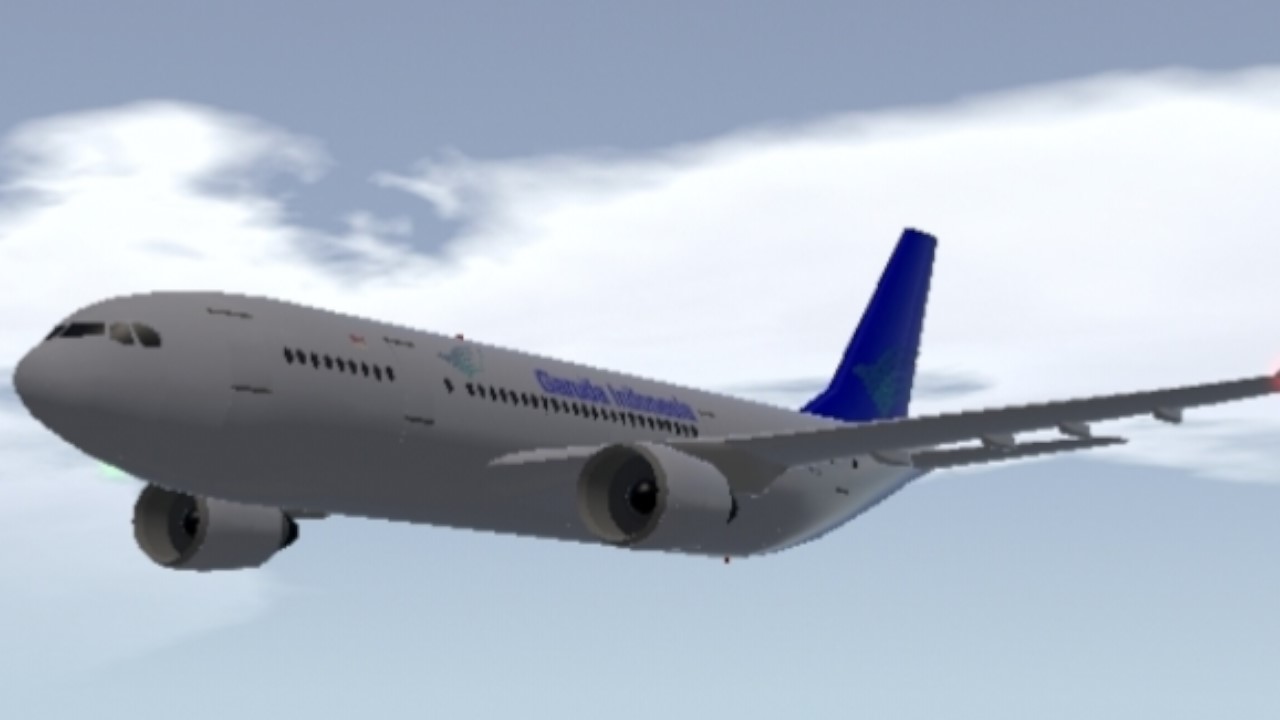
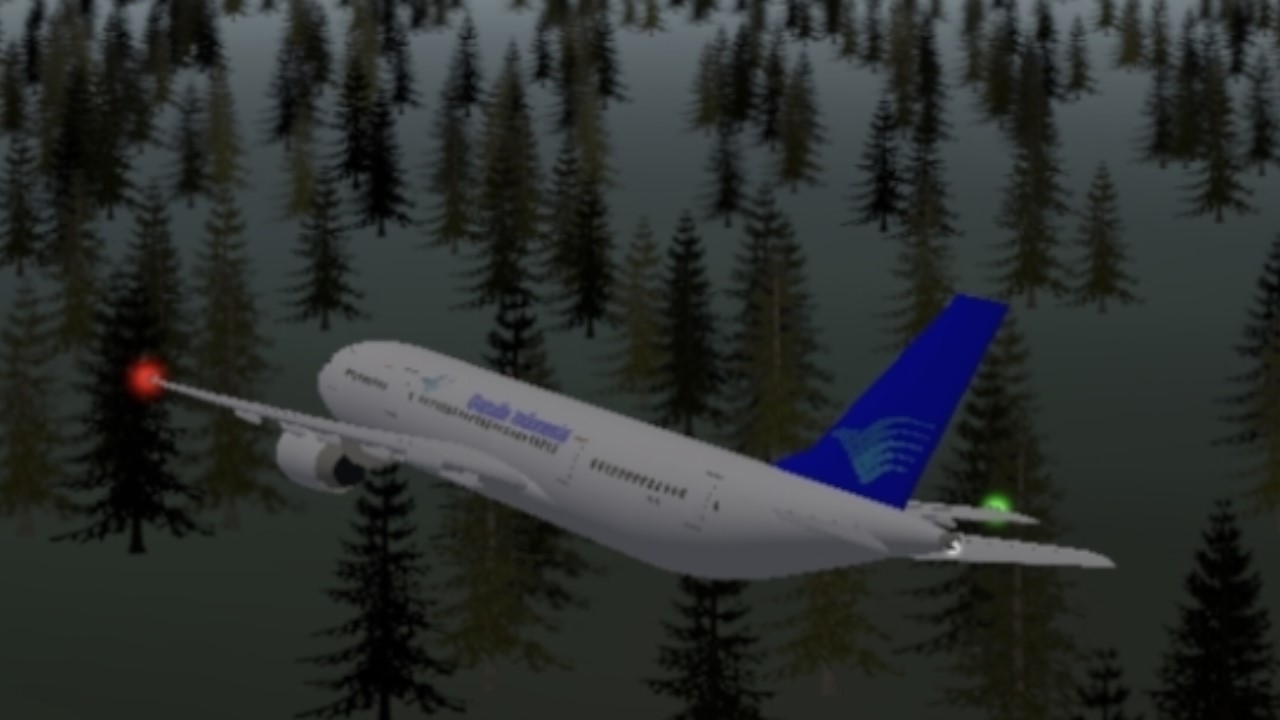
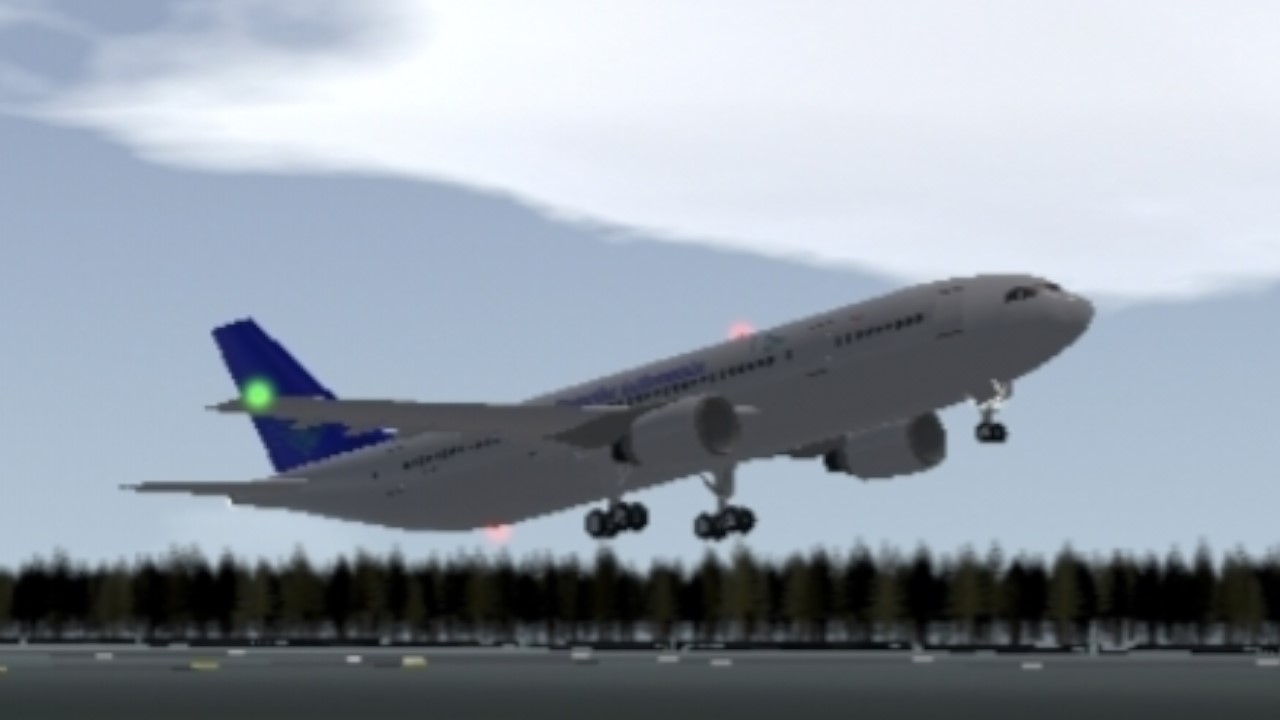


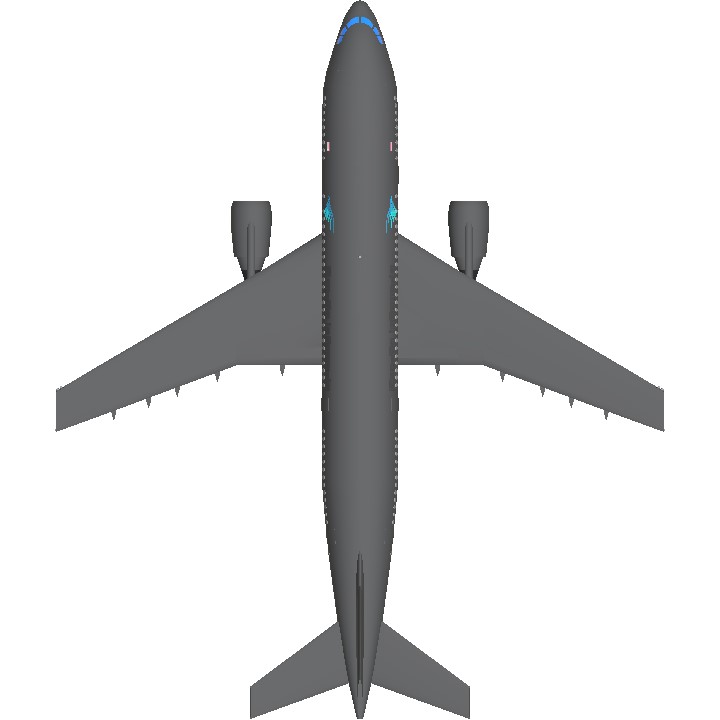
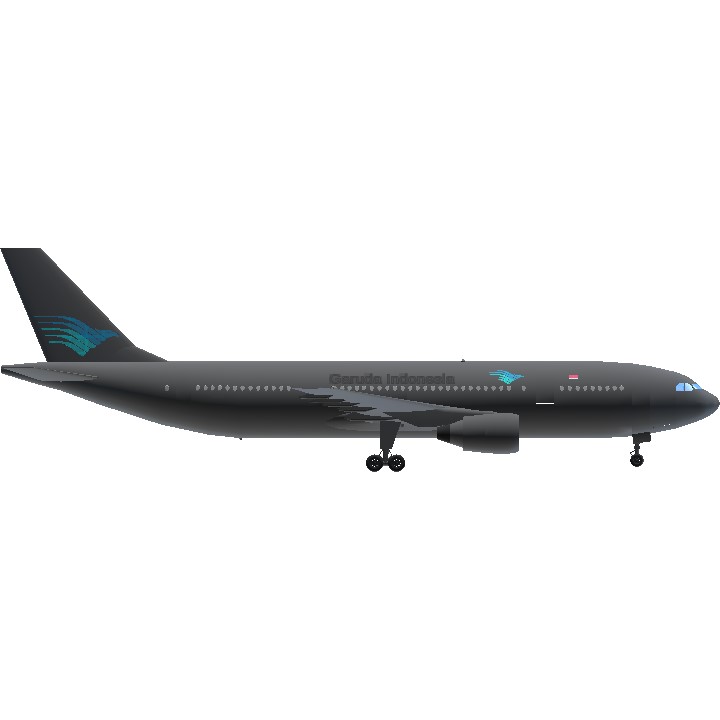

@Brololxd oh ok
PK-GPQ Isnt a 737, Its a A330-200
Cool